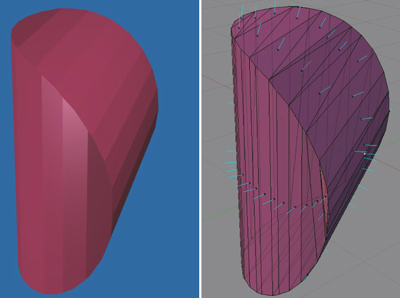I can answer your question with the specialization to convex polyhedra and polytopes. Specializing further to $\mathbb{R}^3$, the result is that
$n \ge 4$ positive real numbers are the face areas of a convex polyhedron if and only if the largest number is not more than the sum of the others.
I wrote up a short note establishing this: "Convex Polyhedra Realizing Given Face Areas," arXiv:1101.0823. The result relies on Minkowski's 1911 theorem, which perhaps you know:
Theorem (Minkowski). Let $A_i$ be positive faces areas and $n_i$ distinct, noncoplanar unit face normals, $i=1,\ldots,n$. Then if $\sum_i A_i n_i = 0$, there is a closed convex polyhedron whose faces areas uniquely realize those areas and normals.
This theorem reduces the problem to finding orientations $n_i$ so that vectors of
length $A_i$ at those orientations sum to zero. And this is not difficult.
Here is Figure 3 from my note from which you can almost infer the construction:
Cylinder-Cylinder http://cs.smith.edu/%7Eorourke/MathOverflow/CylinderCylinder.jpg
Minkowski's theorem generalizes to $\mathbb{R}^d$ and so does an analog of the above claim (but I did not work that out in detail in the arXiv note). In terms of an algorithm, the decision question is linear in the number $n$ of facet areas, and even constructing the polyhedron is linear in $\mathbb{R}^3$, and likely $O(dn)$ in $\mathbb{R}^d$ (but again, I didn't work that out).
But you don't mention the word "convex" in your post, so perhaps you are interested in nonconvex polyhedra and polytopal complexes?
